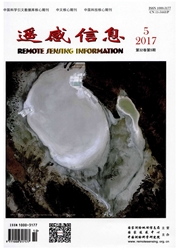

 中文摘要:
中文摘要:
针对利用多源遥感数据监测旱情变化需要研究波段宽差异对指数的影响,而目前缺乏相关对比研究这一问题,该文基于叶片辐射传输模型,选用已广泛应用的光谱指数(包括植被指数与植被水分指数),通过对比研究筛选出反演精度高、对叶片含水量变化敏感、受波段宽变化影响小(适合应用于多源遥感数据)的指数。结果显示,植被指数与植被水分指数反演叶片含水量精度均较高(确定系数:0.983,0.917)。但植被水分指数对叶片含水量变化敏感而对波段宽的变化不敏感,植被指数对叶片含水量变化不敏感且受波段宽变化的影响大。因此,在利用多源传感器数据估算叶片含水量时应选用植被水分指数。在所选植被水分指数中,对叶片含水量变化最敏感同时对波段宽的变化最不敏感指数为归一化差异红外指数(Normalized Difference Infrared Index,NDII)与全球植被湿度指数(Global Vegetation Water Moisture Index,GVMI)。
 英文摘要:
英文摘要:
Spectral index method was widely applied in drought monitoring. Comprehensive use of multi-sensor data needs to be taken to improve precision and timeliness of drought detection. The effect of bandwidth on retrieval of leaf water content by spectral indices (including vegetation water indices and vegetation indices) was evaluated in order to monitor leaf water content from multiple remote sensing data. 13 vegetation water indices and 10 vegetation indices were analyzed and compared based on data simulated by radiation transfer model PROSPECT. The results showed that both indices had good correlation with leaf water content in leaf scale (average correlation coefficient square:01 983,0. 917). Then, sensitivity of indices to variations of leaf water content and bandwidth was analyzed and compared, and the results showed that vegetation water indices were sensitive to leaf water content variations and comparatively insensitive to bandwidth variations (except plant water index) , while vegetation indices had low correlation with leaf water content and were strongly affected by bandwidth variation. Therefore, vegetation water indices instead of vegetation indices should be chosen in estimating leaf water content in leaf scale. The impact of bandwidth should be considered when choosing vegetation indices from multiple satellite data. Among 13 selected vegetation water indices,NDII and GVMI were proved to be most sensitive to leaf water content and most sensor-independent.
 同期刊论文项目
同期刊论文项目
 同项目期刊论文
同项目期刊论文
 期刊信息
期刊信息
